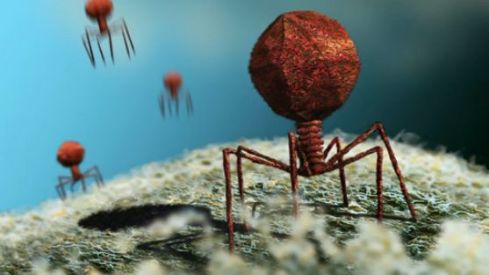You probably didn’t know that Viruses make up most of the DNA on our planet.
There are more viruses on earth than there are stars in the universe. That’s a really, really, REALLY big number.

Viruses inject their DNA into their hosts, thus preserving their DNA and allowing it to replicate. It is estimated that 100,000 genes in our genome are from viruses. That’s about 8% of our genome.
Yes, you are in some sense a giant walking virus… (Humanity has been compared to a cancer on the earth, so a virus may actually be an improvement) – but that’s not all.

In his talk at TED2012, researcher and jungle genome operative Nathan Wolfe makes the point that until 1898, when Dutch microbiologist Martinus Beijerinck published a paper showing that something smaller than bacteria were causing diseases, something he called a virus, we had no idea that an entirely undiscovered form of life existed everywhere on our planet.
If we didn’t know about the most prevalent lifeform on our planet until 100 years ago, is there something else out there that we might not know about yet? Could science have overlooked something even BIGGER?
Dark DNA may offer some clues in this Ted Talk by the radical epidemiologist Nathan Wolfe.
What is Dark DNA?
Dark DNA is the genetic code in the human genome that currently has no known original source.
We have traced 8% of the human genome to viruses. 1-2% of our genome comes from other animals. Believe it or not you share 55% of your genetic code with a banana – and that’s not just men.
However, 20% of our genome is completely unaccounted for. We have no idea where it came from.
Wolfe said, “As we started to look at this information, we would see that about 20 percent of the genetic information in your nose doesn’t match anything that we’ve ever seen before — no plant, animal, fungus, virus or bacteria. Basically we have no clue what this is.”
“If you think 20 percent of genetic information in your nose is a lot of biological dark matter, if we looked at your gut, up to 40 or 50 percent of that information is biological dark matter. And even in the relatively sterile blood, around one to two percent of this information is dark matter — can’t be classified, can’t be typed or matched with anything we’ve seen before.”
“At first we thought that perhaps this was artifact. These deep sequencing tools are relatively new. But as they become more and more accurate, we’ve determined that this information is a form of life, or at least some of it is a form of life. And while the hypotheses for explaining the existence of biological dark matter are really only in their infancy, there’s a very, very exciting possibility that exists: that buried in this life, in this genetic information, are signatures of as of yet unidentified life.”
Some scientists have begun looking for patterns and structures in this “dark DNA” and have already made surprising discoveries, including sequencing unknown mircrobes that produce protein in new ways.
But will the BIG discovery happen? Will this dark DNA hold the secret to a form of life that we have never known before?

Will Dark DNA reveal a lifeform that is all around us, influencing our every day lives in unknown ways, yet has been missed by science?
Or will dark DNA confirm the suspicions of many pseudo-scientific X-Files fans (and maybe a few Scientologists) who believe that aliens started life on our planet by injecting their DNA into earth forms. I vote for that one.
——————————————————————————————————————-
RELATED POSTS:
























